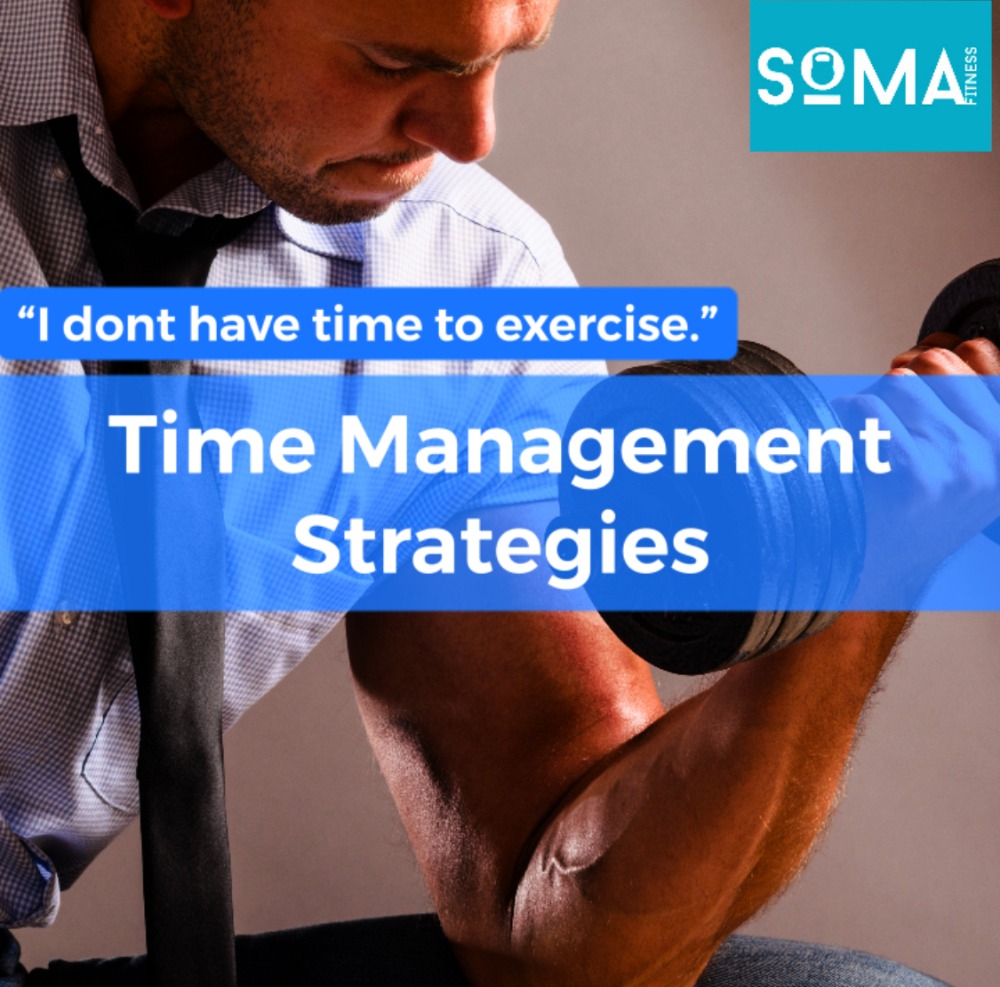Time Management Strategies

When it comes to achieving your fitness goals, time management is crucial. With a busy schedule, it can be challenging to make time for exercise and healthy habits. However, with proper time management strategies, you can prioritise your fitness goals and make significant progress towards your goals and a healthier lifestyle. As personal trainers, we discuss these essential time management tips with our clients to help remain organised and achieve their fitness goals.
- Don’t make the excuses: So many times we hear individuals within our personal training facility give us the excuse that they don’t have the time. Once we run through the weekly schedule we often discover that it is not lack of time rather a lack of the individual been organised with their time and the hierarchy of what is a priority.
- Plan your workouts in advance: One of the most effective time management strategies is to plan your workouts in advance. Take some time each week to schedule your workouts for the coming week. This will help you stay on track and ensure that you have time set aside for exercise as a priority. Treat these time slots like important meetings and how ever you are feeling turn up and do your best. There will be times when you will feel fatigued and mentally drained, still turn up and do what you can I promise you will leave the gym feeling much better than you did when you walked in.
- Make use of your calendar: Use your calendar to schedule your workouts and other habits like meal prep, mobility, walks or cardio. This will help you stay organised and ensure that you don’t double-book yourself or forget about important commitments. If it is in the diary its going to get done if we do not remain organised you will end up skipping or forgetting. For example meal prep will require a weekly shop, if you know that you will be meal prepping on a Sunday it will be important that you schedule your shopping for Saturday or Sunday morning.
- Set realistic goals: It’s important to set realistic fitness goals that fit into your schedule. If you’re struggling to find time for exercise, consider starting with shorter workouts or breaking up your workouts throughout the day. It is better to set yourself a realistic frequency that you can keep consistent. If you are in this situation I would start by scheduling yourself x 2 sessions in the gym per week even if it’s back to back days on the weekends or early mornings stick to it and develop the habit of remaining consistent and build on it.
- Hire a personal trainer: Working out with a personal trainer is a great way to stay motivated and accountable. Plus, it takes the extra time away that is required to program your sessions and make your exercise feel less like a chore.
- Focus on high-intensity workouts: High-intensity workouts like HIIT (high-intensity interval training) can be a time efficient way to burn calories and improve your fitness in a short amount of time. Incorporating these types of workouts into your routine can help you make the most of your limited time. If you have time to do steady state cardio add this is into your schedule as it is also highly beneficial.
- Don’t skip rest days: It’s important to give your body time to rest and recover between workouts. Skipping rest days can lead to burnout and injury, which will ultimately set you back in your fitness journey. Plan your rest days in advance and use them to recharge and prepare for your next workout. Plan days where you might go for a nice walk in the country or go and use a facility with a sauna, book yourself a massage or a session in a float spa.
- Multitask when possible: If you’re short on time, try to multitask when possible. For example, you could listen to a podcast or audiobook while you’re on the treadmill, or you could do bodyweight exercises while watching TV, or if you have a meeting over the phone go for a walk and get your steps in at the same time. Multitasking isn’t productive with a lot of things however in this situation it works really well.
- Use a timer: Using a timer for your rest periods can help you stay on track during your workouts and make the most of your time.
- Don’t scroll: leave your phone on airplane mode during your workouts. Mindless scrolling will be unproductive and not allow focus within your training.
As personal trainers we believe that time management is a crucial component of achieving your goals. Remember to be patient and persistent, and don’t be afraid to ask for help or support from a personal trainer or fitness professional to help guide and structure your plan of action.










Recent Comments